Are you tired of being blocked by websites or getting flagged for suspicious activity? Do you want to maintain your anonymity online and protect your privacy? If so, you might want to consider using a rotating proxy. But what is a rotating proxy? Simply put, it’s a type of proxy server that automatically changes the IP address it uses to connect to the internet. This means that every time you send a request through the proxy, it appears as though it’s coming from a different location.
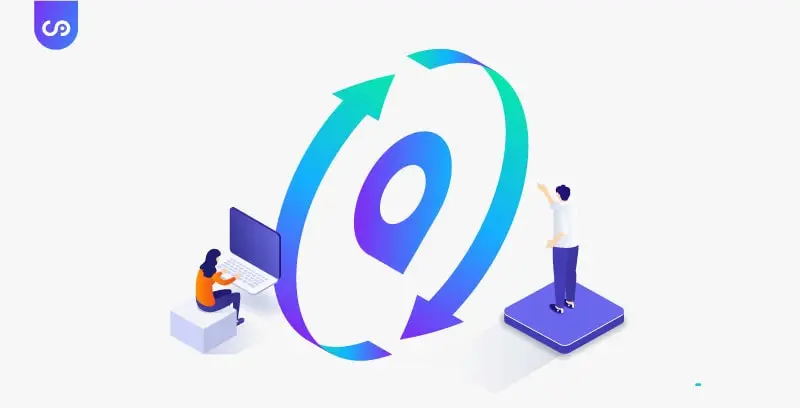
In this article, we’ll explore the world of rotating proxies and how they can help you bypass restrictions, protect your identity, and accomplish a variety of online tasks more efficiently. From understanding how they work to evaluating different rotating proxy services, we’ll cover all the essential information you need to know about what is a rotating proxy and why it’s such a valuable tool in today’s digital landscape. So, let’s get started!
What are Rotating Proxies?
In the sprawling digital landscape we navigate daily, the notion of privacy and security has gained paramount importance. As we traverse websites, conduct research, and engage in various online activities, our digital footprints become ever more visible. This is where the concept of rotating proxies emerges, offering a dynamic shield of anonymity that enhances security, enables efficient data collection, and unlocks restricted content.
Rotating proxies, in essence, are a breed apart from the static proxies you may be accustomed to. Unlike their stationary counterparts, rotating proxies embrace dynamism. They continually change the IP address from which your requests are routed, making your online activities remarkably challenging to trace. This constant IP rotation adds an extra layer of obscurity, safeguarding your online identity and activities from prying eyes.
How Rotating Proxies Work
To understand how rotating proxies work, it’s important to first understand what is a proxy. A proxy server acts as an intermediary between your device and the internet, allowing you to access websites and services without revealing your true IP address. This can be useful for a variety of reasons, such as bypassing geographic restrictions, increasing privacy, and improving network performance.
However, using a single proxy server can have its drawbacks. For example, if the website you’re accessing detects that you’re using a proxy, it may block your access or flag your activity as suspicious. This is where rotating proxies come in.
Rotating proxies work by cycling through a pool of different proxy servers, each with its own unique IP address. This means that each time you make a request through the proxy, it appears as though it’s coming from a different location.
There are several different methods for rotating proxies, including random rotation, sequential rotation, and rotating based on time or request thresholds. Some rotating proxy services also use advanced techniques such as proxy chaining and cascading to enhance rotation and further mask your identity.
By using rotating proxies, you can enjoy enhanced anonymity and privacy online, as well as mitigate the risk of getting blocked or flagged by websites and services. Additionally, rotating proxies can help distribute traffic and balance load, improving performance and reducing the risk of service interruptions.
Overall, rotating proxies are an essential tool for anyone looking to protect their privacy and maintain their anonymity online. Whether you’re using them for web scraping, SEO activities, or just anonymous browsing, understanding how they work can help you get the most out of this powerful technology.
Advantages of Rotating Proxies
Rotating proxies offer a wide range of advantages that make them an essential tool for many online activities. Here are some of the key benefits of using rotating proxies, including how they can be used with residential proxies to enhance their effectiveness:
- Enhanced anonymity and privacy: By cycling through a pool of different IP addresses, rotating proxies make it difficult for websites and services to track your online activity and identify your true location. When used in combination with residential proxies, which are IP addresses assigned to physical locations and internet service providers, you can achieve an even higher level of anonymity and privacy.
- IP rotation for bypassing restrictions: Many websites and services use IP blocking and other restrictions to prevent unwanted access or activity. By using rotating proxies, you can easily bypass these restrictions by appearing as though you’re accessing the website or service from a different location each time you make a request.
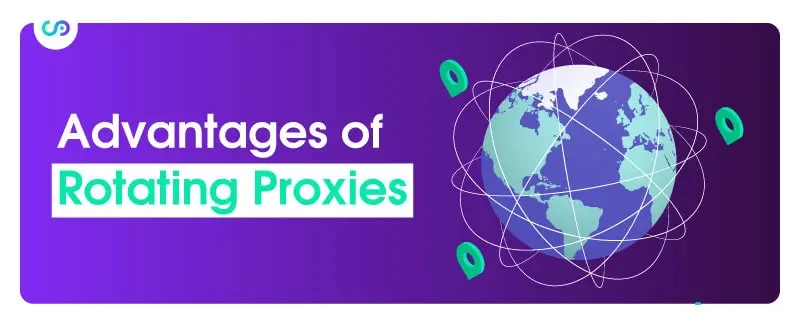
- Load balancing and traffic distribution: Rotating proxies can help distribute traffic and balance load across multiple servers, improving performance and reducing the risk of service interruptions. When combined with residential proxies, which are typically more reliable and less likely to be detected than data center proxies, you can achieve even greater load balancing and traffic distribution benefits.
- Mitigating IP blocking and rate limitations: Some websites and services limit the number of requests you can make from a single IP address, or block access altogether if they detect suspicious activity. By using rotating proxies, you can mitigate the risk of IP blocking and rate limitations by spreading your requests across multiple IP addresses.
Overall, the advantages of rotating proxies are clear, particularly when combined with the reliability and effectiveness of residential proxies. Whether you’re using them for web scraping, SEO activities, or just anonymous browsing, rotating proxies can help you achieve your goals more efficiently and effectively than ever before.
Proxy Rotation Frequency and Techniques
The frequency and techniques used for rotating proxies can have a significant impact on their effectiveness and performance. Here are some important considerations to keep in mind when deciding on the optimal rotation frequency and techniques:
- Determining the optimal rotation frequency: The optimal rotation frequency for your proxies will depend on a variety of factors, including the specific use case, the number of proxies in your pool, and the target website or service. In general, more frequent rotation will provide greater anonymity and mitigate the risk of IP blocking, but may also reduce performance and increase the risk of detection. A good starting point is to rotate proxies at least once every 10-20 requests.
- Randomized and sequential rotation methods: There are two primary methods for rotating proxies – randomized and sequential. Randomized rotation selects proxies at random from the pool for each request, while sequential rotation cycles through the pool in a set order. Randomized rotation provides greater anonymity and mitigates the risk of detection, while sequential rotation can be useful for maintaining session persistence and reducing the risk of session termination.
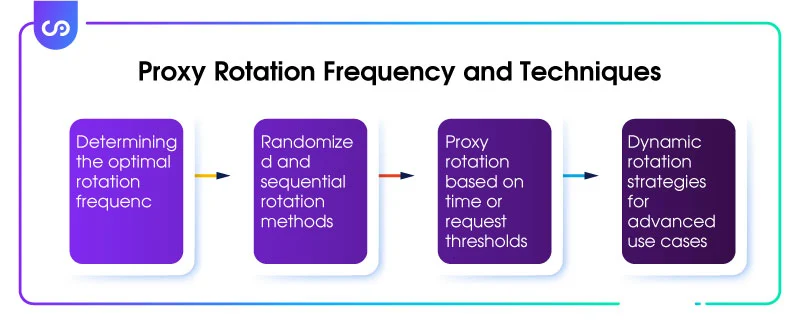
- Proxy rotation based on time or request thresholds: Another technique for rotating proxies is to rotate based on time or request thresholds. For example, you might rotate proxies every 10 minutes or after a certain number of requests. This can help balance the benefits of frequent rotation with the need for consistent performance and session persistence.
- Dynamic rotation strategies for advanced use cases: For more advanced use cases, dynamic rotation strategies such as proxy chaining and cascading can provide even greater anonymity and reliability. Proxy chaining involves routing requests through multiple proxy servers in a series, while cascading involves routing requests through multiple proxy servers in parallel. These techniques can be particularly useful for evading sophisticated detection and blocking methods.
By carefully considering the optimal rotation frequency and techniques for your use case, you can maximize the benefits of rotating proxies while minimizing their drawbacks. Whether you’re using them for web scraping, SEO activities, or just anonymous browsing, choosing the right rotation strategy is essential for achieving your goals effectively and efficiently.
Proxy IP Rotation Techniques
Proxy IP rotation is an essential technique for maintaining anonymity and evading detection when using proxies. Here are some of the most common proxy IP rotation techniques used today:
- Static IP rotation vs. dynamic IP rotation: Static IP rotation involves rotating a fixed set of IP addresses at regular intervals, while dynamic IP rotation involves using a large pool of IP addresses that are rotated randomly or based on certain criteria. Static IP rotation is simpler to implement and manage but may be less effective at evading detection than dynamic IP rotation.
- Rotating IPs through proxy server networks: Another technique for proxy IP rotation is to use a network of proxy servers, each with its own set of IP addresses. This allows you to rotate IPs more frequently and easily, as each proxy server can be configured to rotate its IPs on a different schedule. This technique can also help to mitigate the risk of detection and provide greater anonymity.
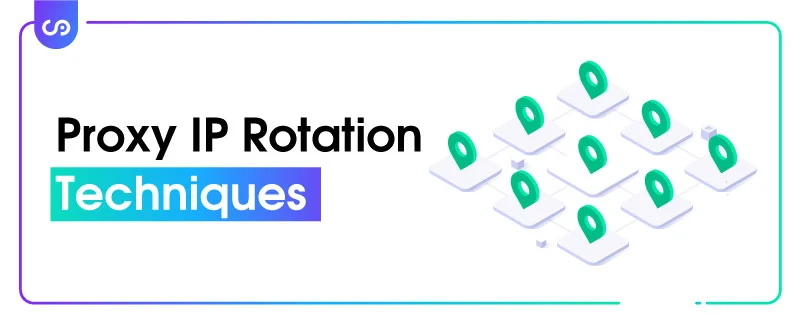
- Proxy chaining and cascading for enhanced rotation: Proxy chaining and cascading can also be used to enhance IP rotation. Proxy chaining involves routing requests through multiple proxy servers in a series, while cascading involves routing requests through multiple proxy servers in parallel. Both techniques can help to maximize IP rotation and reduce the risk of detection and blocking.
- Rotating IPs based on location or other criteria: Finally, you can also rotate IPs based on location or other criteria. For example, you might rotate IPs based on the country or region they are located in, or based on their connection speed or reliability. This can help to provide greater anonymity and reduce the risk of detection and blocking.
By using these techniques and others, you can maximize the effectiveness of your proxy IP rotation and maintain the highest levels of anonymity and privacy. Whether you’re using proxies for web scraping, SEO activities, or just anonymous browsing, choosing the right IP rotation technique is essential for achieving your goals effectively and efficiently.
Rotating Proxies for Anonymity
One of the primary use cases for rotating proxies is to maintain anonymity and protect your personal information online. By masking your IP address and location, rotating proxies can help you avoid tracking and surveillance, evade censorship and geo-restrictions, and protect your identity and privacy.
Residential proxies, in particular, are highly effective at providing anonymity. These proxies use IP addresses that are assigned by internet service providers (ISPs) to actual residential devices, making them indistinguishable from regular residential traffic. This makes them highly unlikely to be detected or blocked, even by advanced anti-proxy measures.
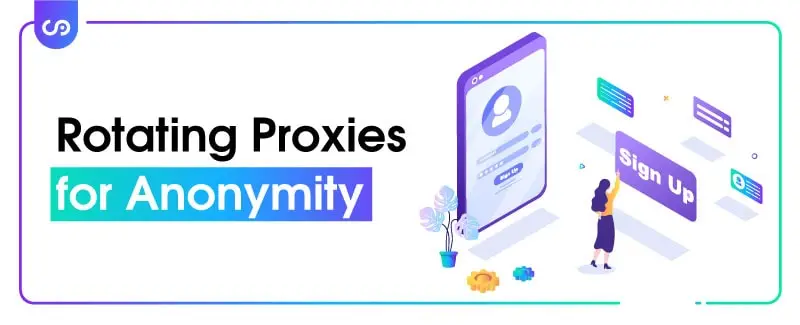
Another key benefit of rotating proxies for anonymity is the ability to rotate IPs frequently. By rotating your IP address on a regular basis, you can avoid being tracked or targeted by websites or online services that are trying to monitor your activity. This can be especially important when engaging in activities that are sensitive or controversial, such as political activism or investigative journalism.
Finally, rotating proxies can also help to protect your personal information online. By masking your IP address and location, you can avoid exposing sensitive information about yourself, such as your physical location, your browsing history, or your personal preferences. This can help to reduce the risk of identity theft, online harassment, and other forms of digital abuse.
Overall, rotating proxies are an effective tool for maintaining anonymity and protecting your personal information online. By choosing the right type of proxy and implementing effective IP rotation techniques, you can achieve a high degree of anonymity and privacy, and engage in online activities with confidence and security.
Related article: Proxy server types
Use Cases for Rotating Proxies
Rotating proxies have a wide range of use cases in today’s digital landscape. Here are some of the most common applications for rotating proxies:
- Web Scraping and Data Extraction: Rotating proxies are often used in web scraping and data extraction projects. By rotating IP addresses, web scrapers can avoid detection and bypass anti-scraping measures. This can be especially important when collecting data from websites that are actively trying to prevent scraping, such as e-commerce sites, travel aggregators, and social media platforms.
- Anonymous Browsing and Web Surfing: Rotating proxies can also be used for anonymous browsing and web surfing. By rotating IP addresses, users can avoid being tracked or targeted by websites and online services that are trying to monitor their activity. This can be especially important for individuals who value their privacy and security online.
- SEO Activities and Rank Tracking: Rotating proxies are also commonly used in search engine optimization (SEO) activities, such as keyword research, link building, and rank tracking. By rotating IP addresses, SEO professionals can avoid triggering anti-spam measures and ensure that their data is accurate and up-to-date.

- Social Media Management and Automation: Rotating proxies can also be used for social media management and automation. By rotating IP addresses, social media marketers can avoid being flagged as spam and can perform multiple actions from multiple accounts without triggering anti-bot measures.
- E-commerce and Price Comparison: Rotating proxies can also be used for e-commerce and price comparison activities. By rotating IP addresses, online retailers and price comparison sites can avoid being blocked or banned by their competitors and can ensure that their prices and product listings are accurate and up-to-date.
Overall, rotating proxies are a versatile tool that can be used for a wide range of applications in today’s digital landscape. Whether you’re a web scraper, a social media marketer, an SEO professional, or just an individual who values their privacy and security online, rotating proxies can help you achieve your goals and stay ahead of the curve.
Conclusion
A rotating proxy is a powerful tool that can help individuals and businesses navigate the complexities of the modern internet. By rotating IP addresses, users can enhance their anonymity and privacy, bypass restrictions, distribute traffic, and mitigate IP blocking and rate limitations. Additionally, rotating proxies have a wide range of applications, including web scraping, SEO activities, social media management, and e-commerce. When evaluating rotating proxy services, it’s important to consider factors such as rotation frequency, IP rotation techniques, and the quality and reliability of the service provider. Ultimately, a rotating proxy is a key tool in maintaining anonymity and overcoming restrictions in today’s digital landscape. Now that you know what a rotating proxy is and how it works, you can leverage this technology to achieve your goals and stay ahead of the competition.
FAQs
What is a rotating proxy?
A rotating proxy is a type of proxy server that rotates its IP address to mask the user’s identity and location on the internet.
How does a rotating proxy work?
A rotating proxy works by assigning a different IP address to the user’s request for each connection, making it difficult for websites to track and identify the user.
Why would I need to use a rotating proxy?
You would need to use a rotating proxy if you want to maintain anonymity, bypass restrictions, distribute traffic, or mitigate IP blocking and rate limitations on the internet.
What are the benefits of using rotating proxies?
The benefits of using rotating proxies include enhanced anonymity and privacy, bypassing restrictions, load balancing and traffic distribution, and mitigating IP blocking and rate limitations, among others.

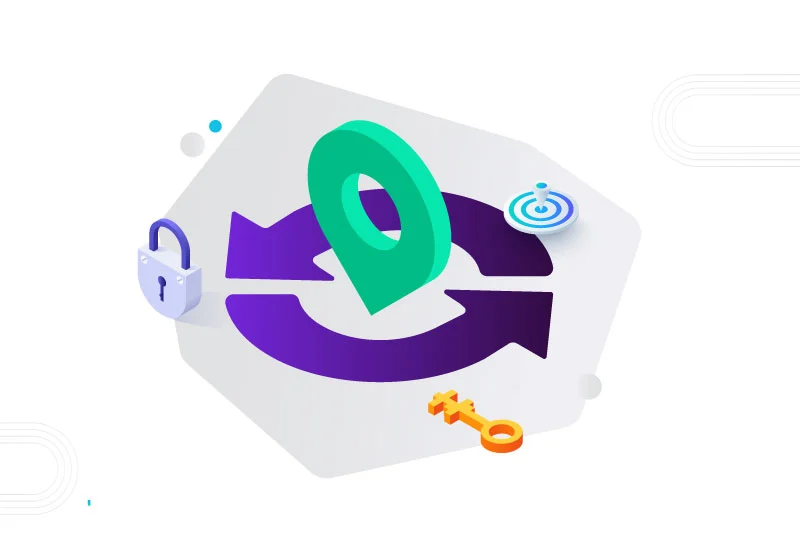
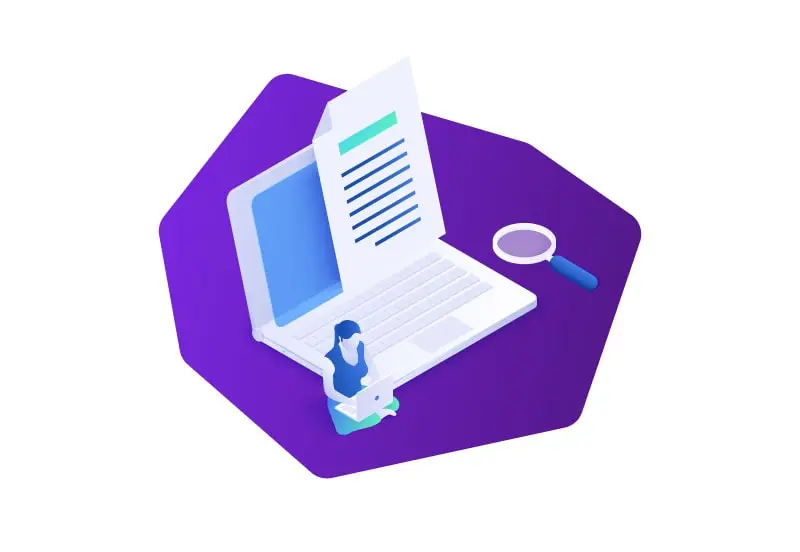
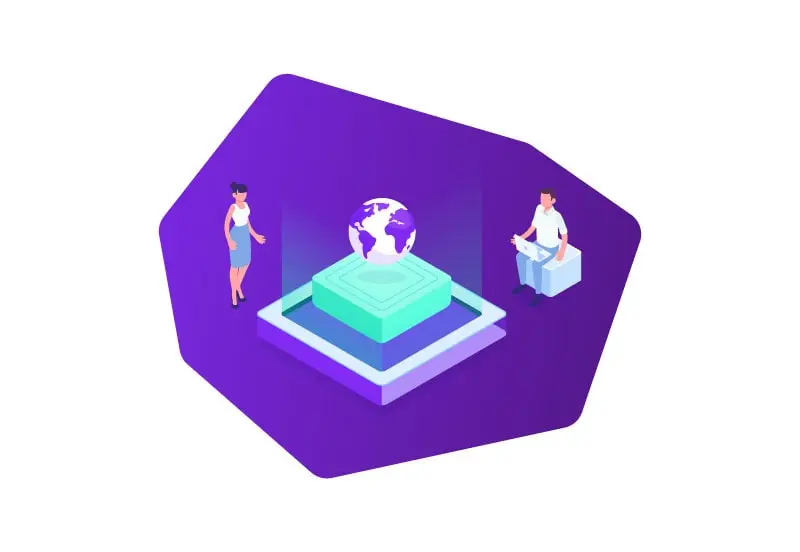
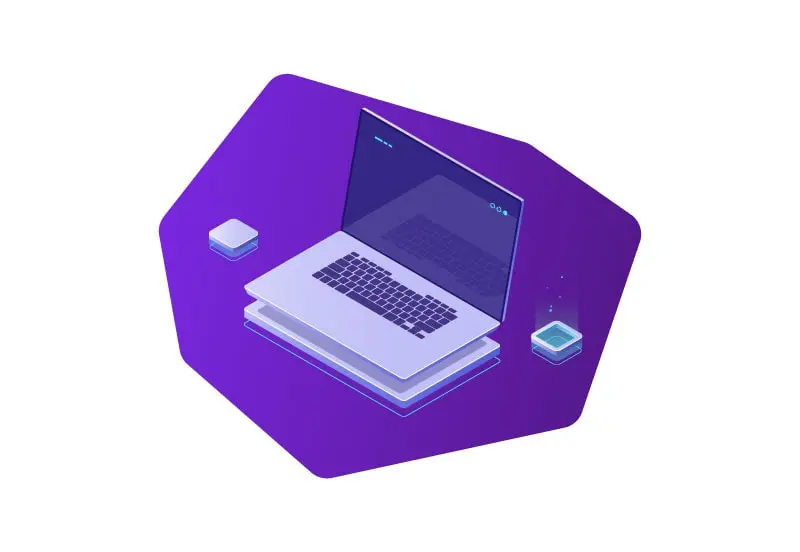


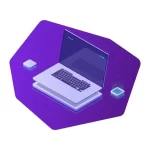
2 thoughts on “What is a Rotating Proxy? Everything You Need to Know”
Rotating proxies are a game-changer for web scraping! They offer a great solution for bypassing IP blocks and ensuring uninterrupted data extraction. With rotating proxies, you can switch between different IP addresses, making it difficult for websites to detect and block your scraping activities. It’s like having a secret identity online!
Rotating proxies refer to a type of proxy service that automatically rotates or changes the assigned IP address at regular intervals. This rotation helps users maintain anonymity and avoid IP blocking while engaging in activities like web scraping. By constantly changing IP addresses, rotating proxies enhance the ability to access and extract data from websites without raising suspicion or being detected. This feature is particularly valuable for tasks that require a high level of anonymity and uninterrupted data gathering.